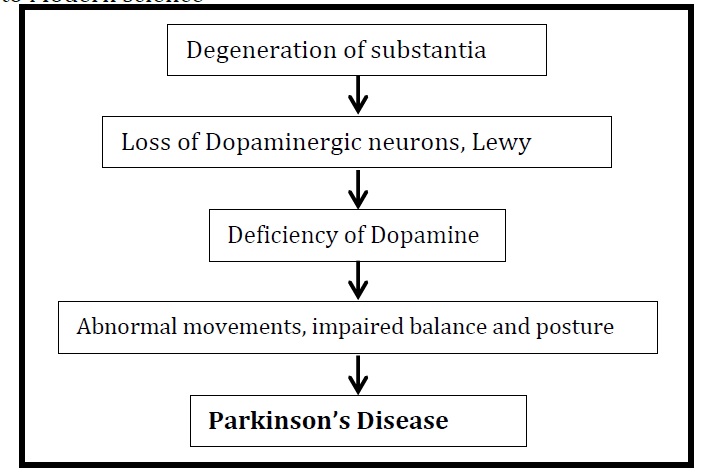Understanding Parkinson’s Disease (PD) in Ayurvedic Prospective
Abstract
Parkinson’s disease (PD) known as Kampavata in Ayurveda, is a degenerative neurological disorder of central nervous system, mainly affecting the motor system. It is the major cause of disability in the aging society, which usually affects after the age of 50 years. This disease is increasing in its frequency with the world population showing an incidence of 1-2 per 1000 population and has equal sex distribution. Symptoms like Kampa (Tremor), Stambha (Rigidity), Chestasanga (Bradykinesia and Akinesia), Vakvikriti (disturbance in speech) etc were described in different contexts of Charaka Samhita, Susruta Samhita and Basavarajeeyam. There is no cure for Parkinson’s disease, but medications, surgery and multidisciplinary management can provide relief and improve the quality of life of the individual. In the treatment aspect, the drug L-Dopa has shown better results similarly Ayurvedic drugs having the similar compounds are useful in this disorder. Based on the symptoms manifested, the disease can be correlated to Kampavata mentioned in Ayurveda classics. Despite of so many advances in the field of medicine, treatment of PD remains highly symptomatic. This instills the need for Ayurvedic management of Kampavata. The present article is intended to focus on the Nidana, Lakshanas, Samprapthi and the management principles of Parkinson’s disease (Kampavata).
Downloads

Copyright (c) 2021 International Journal of Ayurveda and Pharma Research

This work is licensed under a Creative Commons Attribution-NonCommercial-ShareAlike 4.0 International License.






